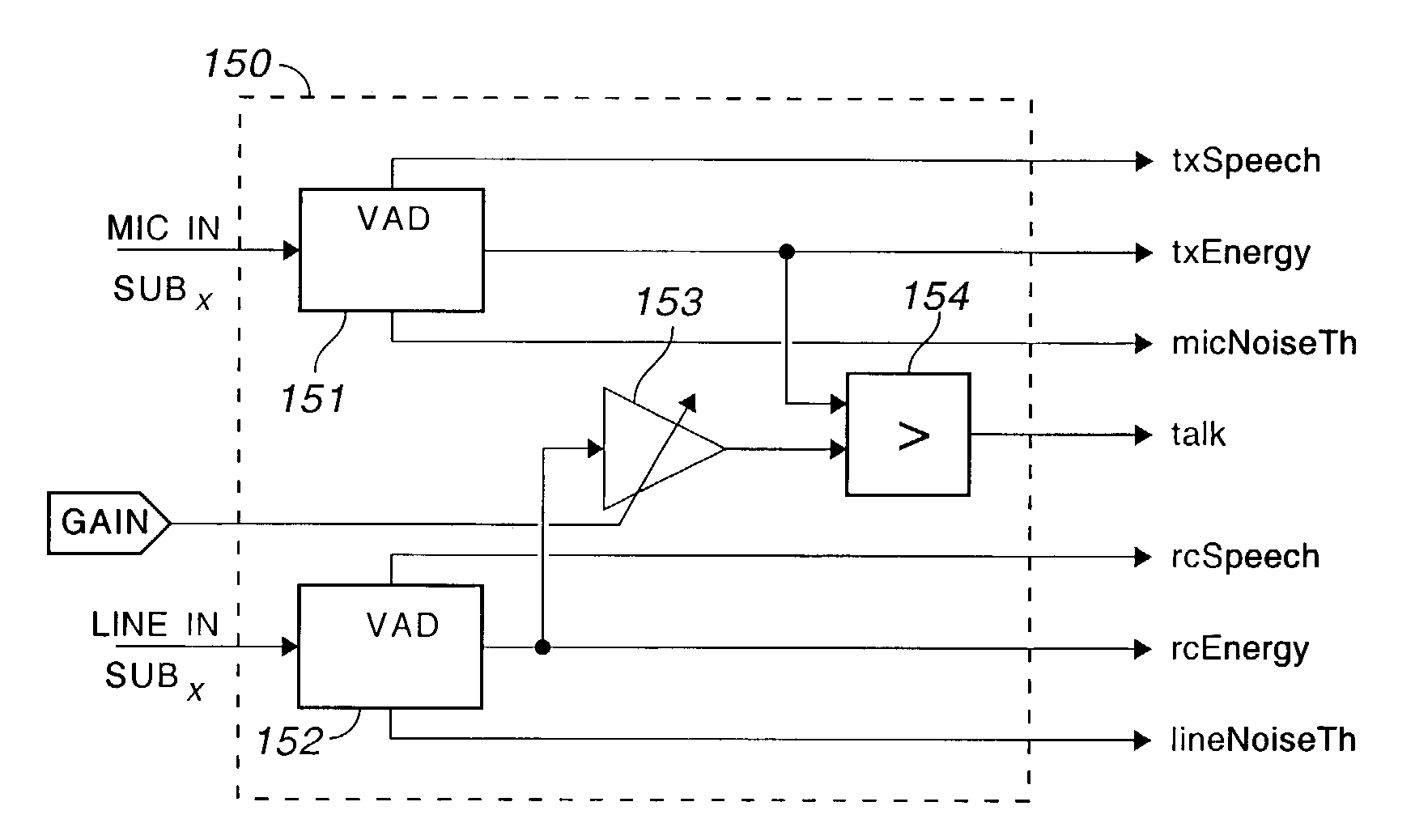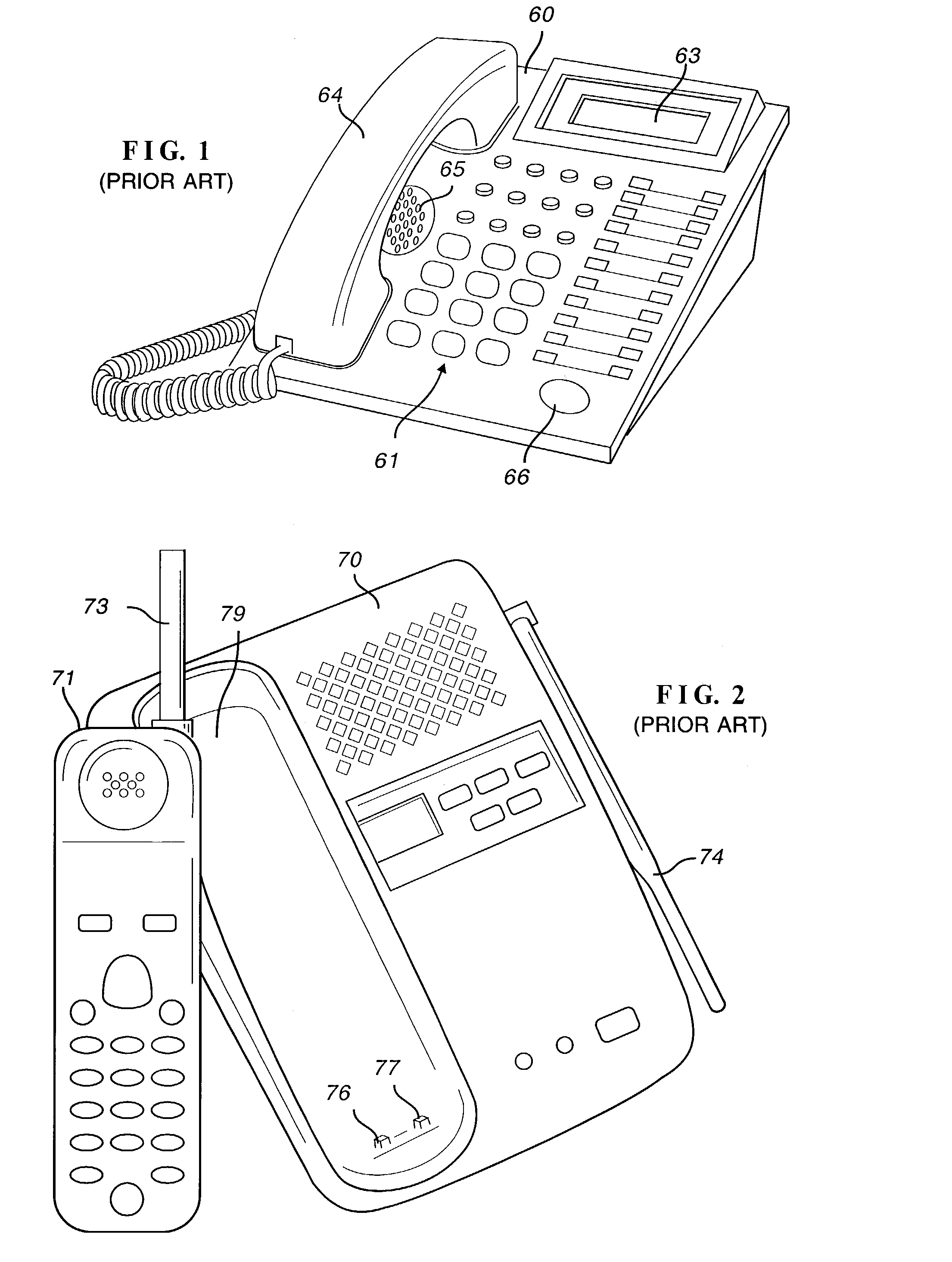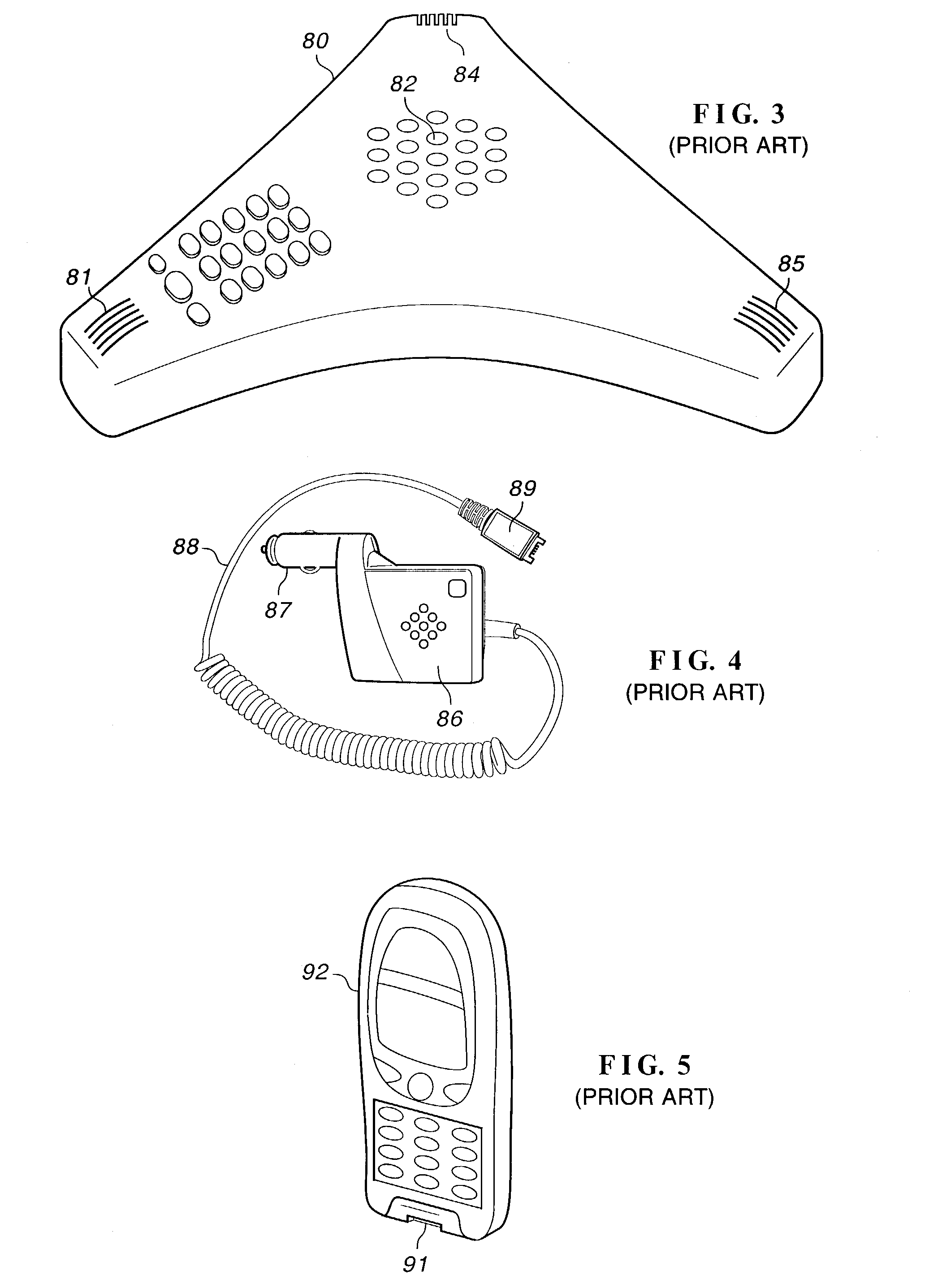Dynamic balance control for telephone
a telephone and dynamic balance technology, applied in the field of telephones, can solve the problems of affecting the quality of the transmitted audio signal, not always providing a sufficient margin of acoustic stability, and reducing the quality of speech, so as to achieve the effect of reducing the half-duplex operation during the call
- Summary
- Abstract
- Description
- Claims
- Application Information
AI Technical Summary
Benefits of technology
Problems solved by technology
Method used
Image
Examples
Embodiment Construction
[0053]This invention finds use in many applications where the electronics is essentially the same but the external appearance of the device may vary. FIG. 1 illustrates a desk telephone including base 60, keypad 61, display 63 and handset 64. As illustrated in FIG. 1, the telephone has speaker phone capability including speaker 65 and microphone 66. The cordless telephone illustrated in FIG. 2 is similar except that base 70 and handset 71 are coupled by radio frequency signals, instead of a cord, through antennas 73 and 74. Power for handset 71 is supplied by internal batteries (not shown) charged through terminals 76 and 77 in base 70 when the handset rests in cradle 79.
[0054]FIG. 3 illustrates a conference phone or speaker phone such as found in business offices. Telephone 80 includes microphone 81 and speaker 82 in a sculptured case. Telephone 80 may include several microphones, such as microphones 84 and 85 to improve voice reception or to provide several inputs for echo rejecti...
PUM
 Login to View More
Login to View More Abstract
Description
Claims
Application Information
 Login to View More
Login to View More - R&D
- Intellectual Property
- Life Sciences
- Materials
- Tech Scout
- Unparalleled Data Quality
- Higher Quality Content
- 60% Fewer Hallucinations
Browse by: Latest US Patents, China's latest patents, Technical Efficacy Thesaurus, Application Domain, Technology Topic, Popular Technical Reports.
© 2025 PatSnap. All rights reserved.Legal|Privacy policy|Modern Slavery Act Transparency Statement|Sitemap|About US| Contact US: help@patsnap.com



